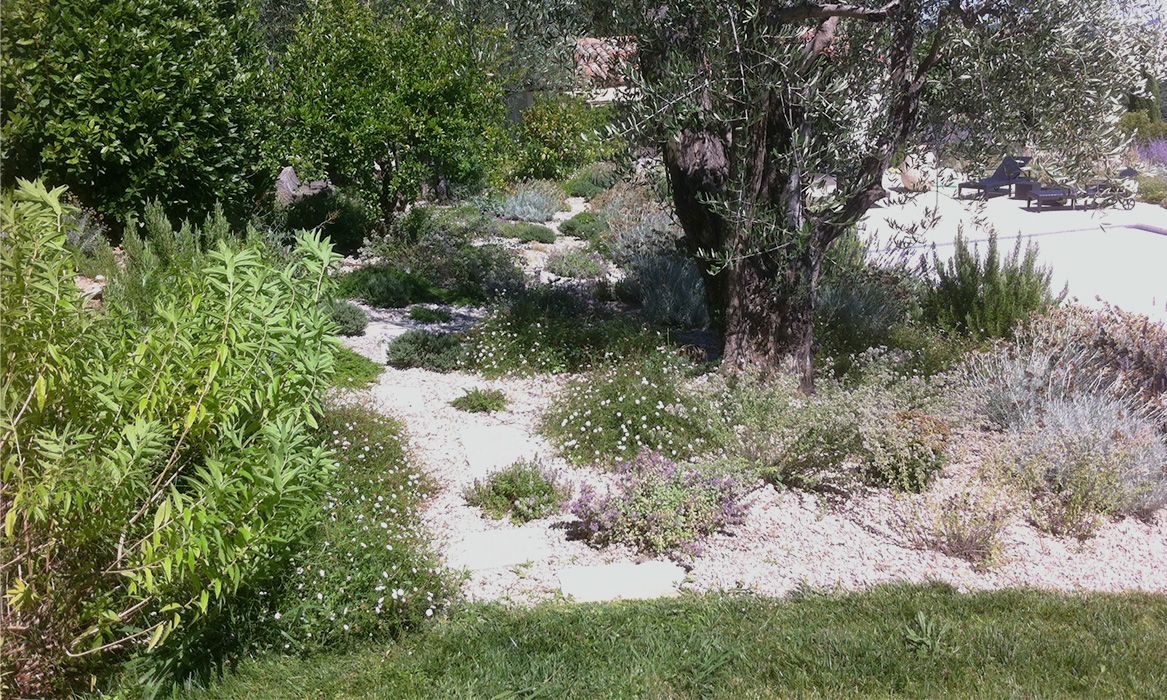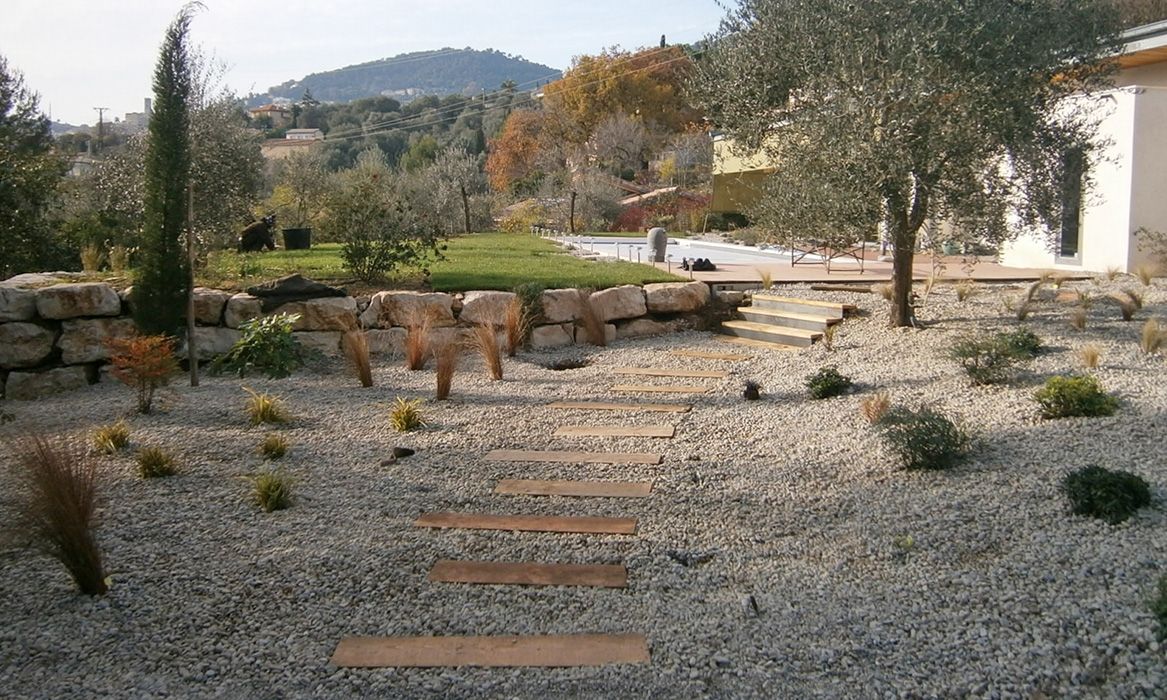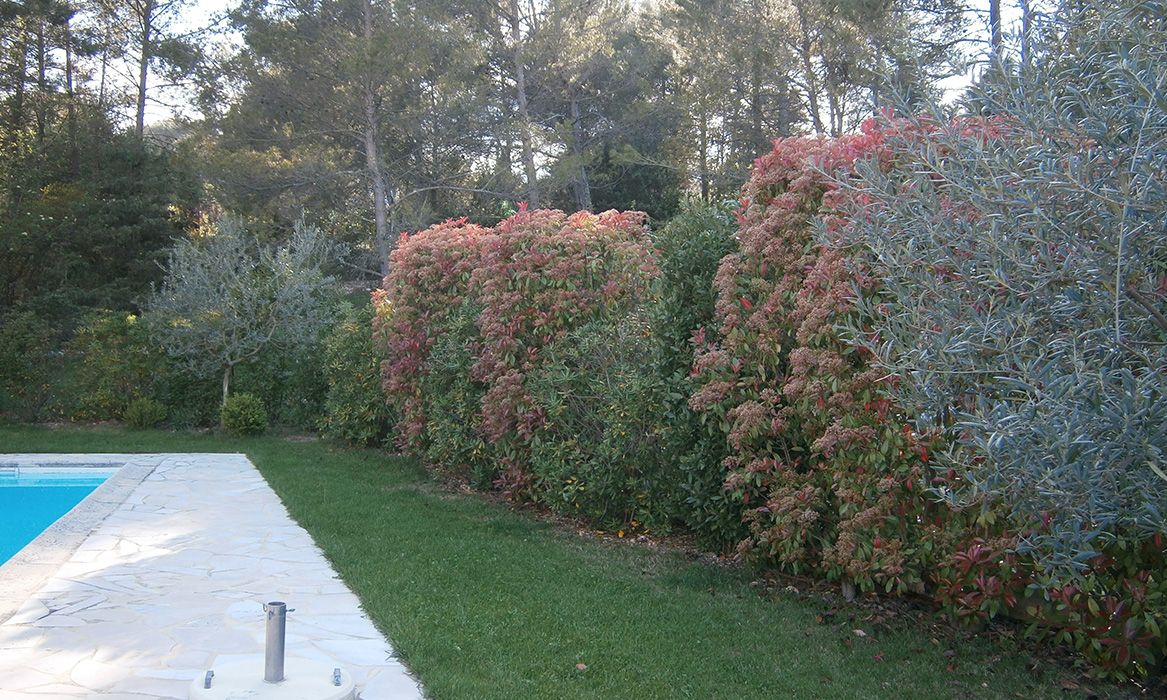Mediterranean gardens
We select native plants that thrive in the Mediterranean climate.
We take the surrounding environment into account
Example:
- Nearby forests, saline air
- Neighbouring gardens
- Noting what works well in your particular garden
We know what each plant needs
- Climate requirements
- Soil requirements (or instance, an Aleppo pine needs calcareous soil while an umbrella pine needs siliceous soil)
- Requirements based on exposure to the sun

Lawn alternatives
Advantages:
- Low-maintenance and less weeding
- Less water, artificial fertilisers and treatments required
- Easier to install
- Short-term savings
- Attractive and original
We plant suitable ground-covering plants for small areas that receive moderate trampling. For larger areas we use minerals such as gravel, pebbles, and flagging punctuated by perennials and small shrubs, or meadowland.

For larger areas, we recommend setting aside an area of dry grassland
Natural grassland attracts bees and other beneficial insects and promotes wildflower growth.
Grassland needs less watering and maintenance (seeds sown at the beginning of the spring and autumn).

We offer alternatives to single-species hedges
Advantages to planting multi-species hedges include:
- Preventing the spread of disease and pests,
- Providing pollen for bees and other helpful insects,
- Windbreak effect: prevents dryness,
- Attractive: Mixes flowers, leaves, and various sents, without the wall effect of a single-species hedge.


